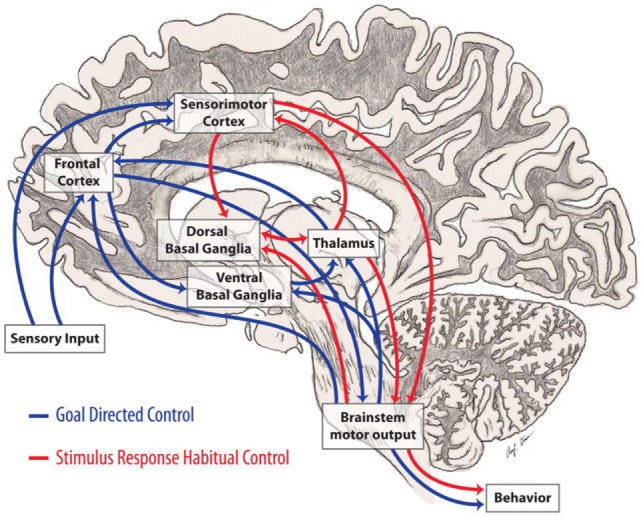Figure 3.

Automatic and voluntary (cognitively interacting) motor control. Motor control integrates both cortical and subcortical structures principally involving those connections between the basal ganglia and frontal lobes involved in automaticity of motor function and its cognitive mediation. (8). In Parkinson’s disease, loss of dopamine in the caudal basal ganglia leads to impaired automatic movements involving circuits important in stimulus based habitual learning (red arrows) and over-reliance on cognitive components of motor control and circuits involved in reward based learning (blue arrows) (from http://neuroanatomyblog.tumblr.com).
